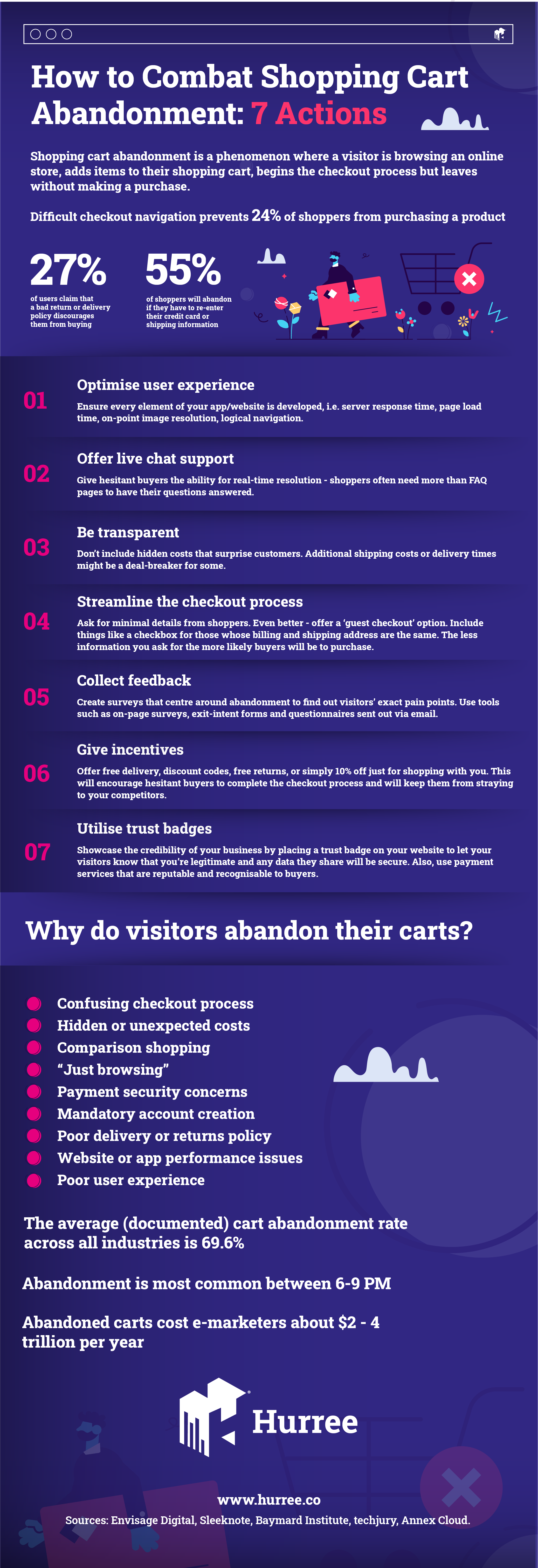As the lives of consumers become more and more digitised, it’s important for businesses and marketers to understand shopping cart abandonment and its potential to negatively impact a company’s return on investment.

Research shows that online retail sales grew by 36% in 2020, and with an ever-looming presence of the global pandemic, online shopping isn’t going anywhere fast. Of course, people still enjoy shopping in brick and mortar stores because of the experience itself; the sensation of how a shop smells, the ability to see a range of products in real-time rather than simply scrolling on a screen. That being said, it’s fair to note that there are many people out there who don’t miss physical shopping and much prefer to shop from the comfort of their own home.
Nevertheless, in the same way that an individual would wander around a physical store, picking up and abandoning items as they go along, the habits of online shoppers are no different. The advantage of digital, however, is that businesses with online stores are able to track, manage and reframe customer experiences to better understand their customers and minimise shopping cart abandonment rates.
To win over shoppers and encourage them to complete their purchases, retailers must develop strong, unwavering campaigns and marketing strategies. Because it doesn’t take much for a customer to abandon their cart after a bad experience and then tell all of their friends about it, but it does take a lot for a business to regain a good reputation after some negative customer experiences.
Take a look at this extensive infographic where we explain why visitors abandon their carts, along with some handy statistics, and offer you 7 key actions that you can take to combat shopping cart abandonment:

Share this Image On Your Site
Book a free demo today and see how Hurree can help you transform your company reporting to improve your sales and marketing output 💌 Don't hesitate to get in touch via contact@hurree.co if you have any inquiries - we’re happy to chat!